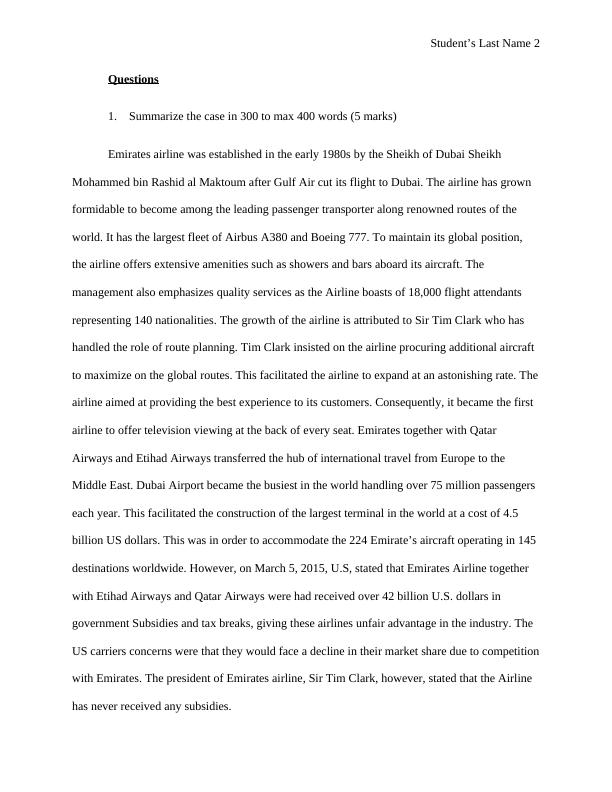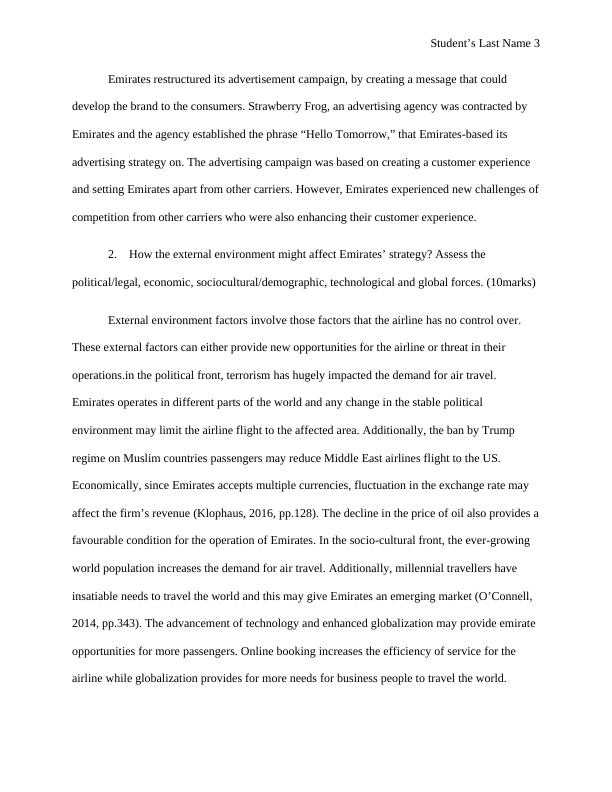Emirates Airline: A Case Study on External and Internal Factors
Complete the tasks given in the assignment brief for the Strategic Management course in the Master of Business Administration program at Guglielmo Marconi University.
Added on 2023-05-28
About This Document
This case study analyzes the external and internal factors affecting Emirates Airline's strategy, including political/legal, economic, sociocultural/demographic, technological, and global forces. It also examines the primary and support activities in the airline's value chain and evaluates the VRIN analysis of its internal resources.
Emirates Airline: A Case Study on External and Internal Factors
Complete the tasks given in the assignment brief for the Strategic Management course in the Master of Business Administration program at Guglielmo Marconi University.
Added on 2023-05-28
End of preview
Want to access all the pages? Upload your documents or become a member.



